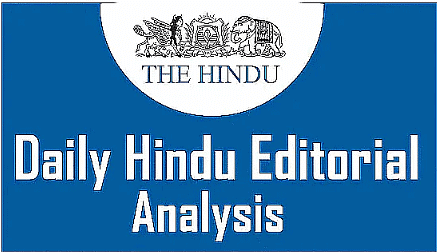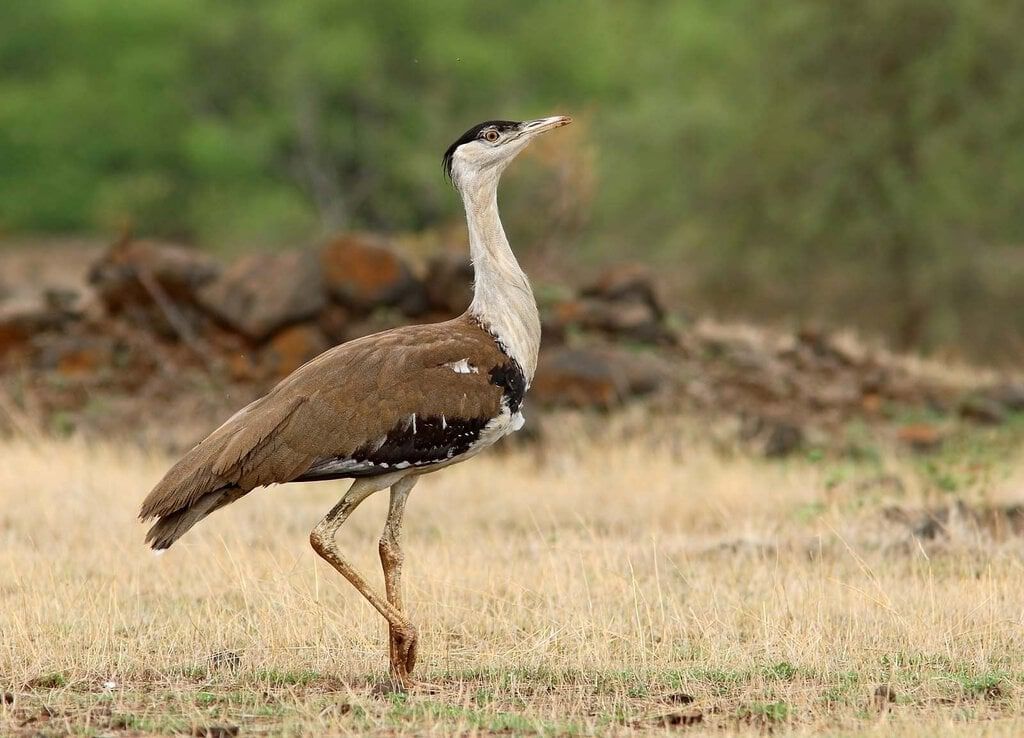UPSC Exam > UPSC Notes > Current Affairs & Hindu Analysis: Daily, Weekly & Monthly > The Hindu Editorial Analysis- 9th August 2024
The Hindu Editorial Analysis- 9th August 2024 | Current Affairs & Hindu Analysis: Daily, Weekly & Monthly - UPSC PDF Download

A Moment for Just Transition Litigation to take Wing
Why in News?
The Supreme Court's decision regarding Climate Change: The Supreme Court has stated that every person has the right to a safe environment without climate change problems under Article 21.
- Details of the Supreme Court's judgment: The Supreme Court made its decision in a case involving M K Ranjitsinh & Ors versus Union of India & Ors.
- Focus of the case: The case was related to safeguarding two bird species in critical danger according to the IUCN Red List - the great Indian bustard (GIB) and the lesser florican.
- Legal status of the birds: Both these bird types are included in Part III of Schedule I of the Wild Life (Protection) Act, 1972.
SC Judgment on Climate Change
- The Supreme Court expanded the scope of Articles 14 and 21 of the fundamental right, stating that individuals should be protected from the negative impacts of climate change.
- Articles 14 and 21 of the Indian Constitution ensure fundamental rights to equality and life, respectively.
- In a recent development, having a clean environment was recognized as a fundamental right under Article 21's Right to Life.
- The court emphasized the link between climate change and various human rights, such as the right to health, indigenous rights, gender equality, and the right to development.
Expanding the Scope of the Right to Life
- The Supreme Court highlighted that the right to life, as per Article 21, should cover having a clean and healthy environment.
- Justice S. Ravindra Bhat emphasized that the right to life involves having a healthy environment, free from climate change impacts.
- This understanding broadens the traditional view of the right to life, showing the close connection between human well-being and the environment's condition.
Incorporating International Law Principles
- The decision of the highest court is heavily influenced by principles of international law, specifically the idea of the "right to a clean environment" acknowledged by many global agreements and statements.
- The Court referred to the Stockholm Declaration from 1972, the Rio Declaration from 1992, and the Paris Agreement from 2015 to establish the worldwide agreement on people's entitlement to a clean environment.
- By including these global frameworks, the ruling reinforces the legal basis for acknowledging this entitlement in India.
Imposing Duties on the Government
- The Supreme Court's decision acknowledges the right to a clean environment and places specific responsibilities on the government to safeguard this right.
- The ruling requires both central and state governments to develop and execute a thorough plan for dealing with climate change that covers ways to reduce its impact, adjust to changes, and address any losses incurred.
- Make sure that this plan is in line with the promises India has made internationally through the Paris Agreement.
- Put in place a strong system for tracking and evaluating progress and the effectiveness of efforts to combat climate change.
- Provide sufficient financial support and technological assistance to enable the implementation of the climate policy.
Addressing Intergenerational Equity
- The judgment recognizes the intergenerational nature of the climate crisis, acknowledging that the current generation has a responsibility to protect the environment for future generations.
- The Court emphasizes that the right to a healthy environment is not limited to the present but extends to future generations, who have an equal claim to a livable planet.
- This principle of intergenerational equity is an essential aspect of the judgment, as it establishes a long-term, sustainable approach to climate action.
Possible Implications of the Judgment
- The Supreme Court's landmark decision on the right to be protected from the negative impacts of climate change has significant implications for India's climate policies and governance.
- This decision allows for more climate-related legal cases in India, enabling individuals and groups to contest the government's climate strategies through Public Interest Litigation (PIL). This could result in stronger judicial oversight and pressure on the government to enhance its climate efforts.
- The Court's instruction to the government to create a comprehensive climate change strategy that complies with global agreements could promote the development of a more complete and ambitious climate action plan.
- This move has the potential to speed up India's shift towards a low-carbon economy and enhance its resilience against climate change effects.
- The acknowledgment of the right to a healthy environment also carries implications for addressing the unequal impact of climate change on disadvantaged and at-risk communities.
- However, implementing this important decision will come with significant obstacles.
- Turning the Court's instructions into effective and measurable climate actions will demand strong political determination, solid institutional structures, and ongoing public involvement.
- Coordinating climate policies among various government levels (national, regional, local) and ensuring sufficient financial and technological support for implementation will be critical for realizing the right to a healthy environment successfully.
The Great Indian Bustard

- The Great Indian Bustard is the official bird of Rajasthan.
- The Great Indian Bustard is a significant species that shows the state of grassland environments in India. If this bird is thriving, it indicates that the grasslands where it resides are healthy too.
- The Great Indian Bustard is predominantly located in the states of Rajasthan and Gujarat. Small populations can also be found in states such as Maharashtra, Karnataka, and Andhra Pradesh.
- An expert panel was established in an open court ruling to investigate issues faced by this bird species. Their habitats and flight paths often intersect with power lines in Gujarat and Rajasthan.
Protection status of The Great Indian Bustard
The Great Indian Bustard holds a special protection status:
- It is classified as Critically Endangered according to the IUCN Red List.
- It is part of Appendix I of the Convention on International Trade in Endangered Species (CITES), which means that trading this species is completely forbidden.
- It is also included in Appendix I of the Convention on Migratory Species (CMS).
- In India, it is safeguarded under Schedule I of the Wildlife (Protection) Act, 1972, offering the utmost level of protection.
Conclusion
- The Supreme Court's decision on protecting against the harmful impacts of climate change as a basic right under Article 21 could greatly change how India deals with climate issues.
- By making environmental protection a part of our constitutional rights, the Court has opened the door for a more responsible, inclusive, and lasting approach to dealing with the climate emergency.
- This important ruling not only reinforces the legal basis for taking action on climate change but also encourages people to play an active role in shaping India's climate destiny.
The document The Hindu Editorial Analysis- 9th August 2024 | Current Affairs & Hindu Analysis: Daily, Weekly & Monthly - UPSC is a part of the UPSC Course Current Affairs & Hindu Analysis: Daily, Weekly & Monthly.
All you need of UPSC at this link: UPSC
|
44 videos|5359 docs|1133 tests
|
Related Searches
















